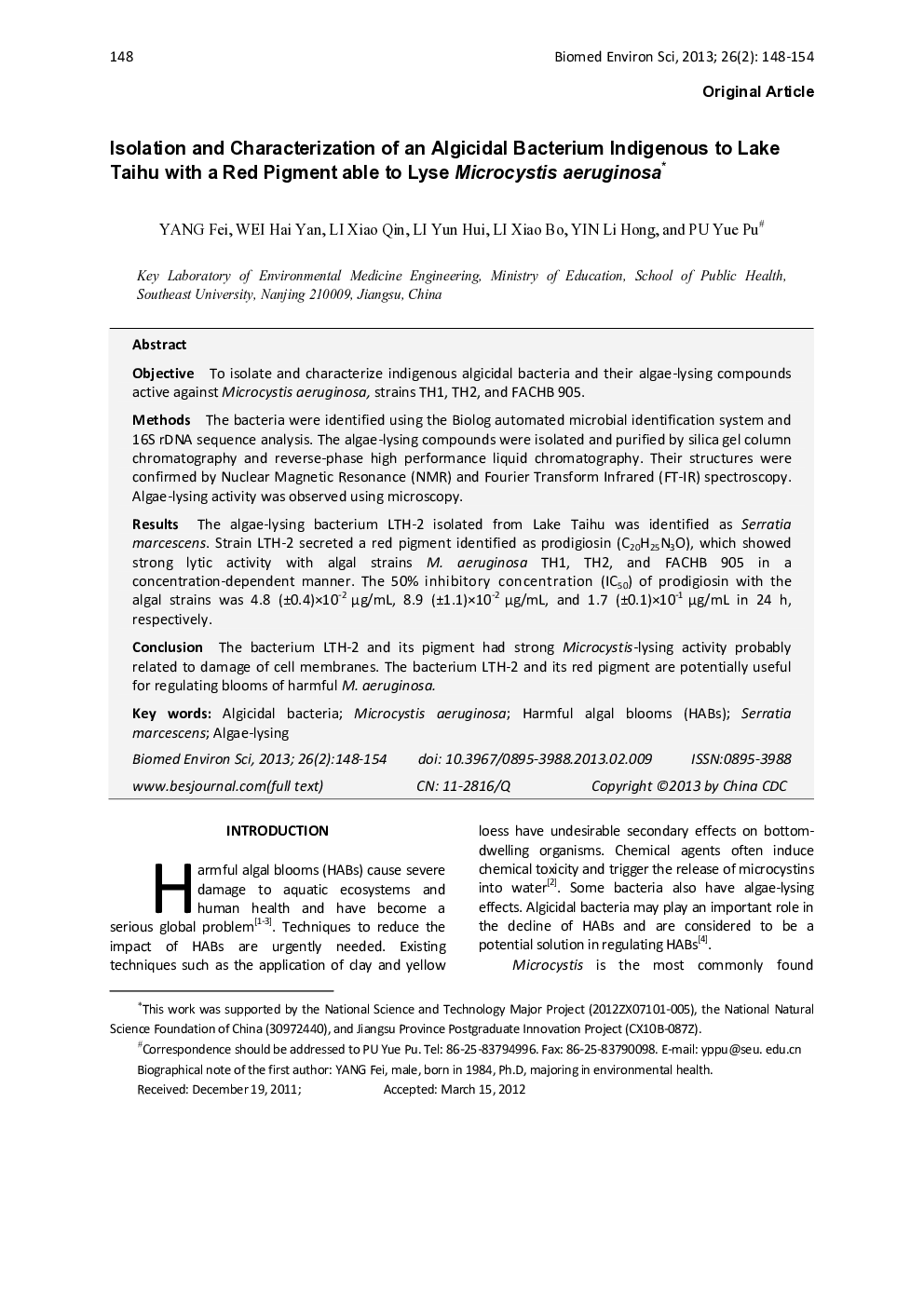| کد مقاله | کد نشریه | سال انتشار | مقاله انگلیسی | نسخه تمام متن |
|---|---|---|---|---|
| 4196334 | 1278675 | 2013 | 7 صفحه PDF | دانلود رایگان |

ObjectiveTo isolate and characterize indigenous algicidal bacteria and their algae-lysing compounds active against Microcystis aeruginosa, strains TH1, TH2, and FACHB 905.MethodsThe bacteria were identified using the Biolog automated microbial identification system and 16S rDNA sequence analysis. The algae-lysing compounds were isolated and purified by silica gel column chromatography and reverse-phase high performance liquid chromatography. Their structures were confirmed by Nuclear Magnetic Resonance (NMR) and Fourier Transform Infrared (FT-IR) spectroscopy. Algae-lysing activity was observed using microscopy.ResultsThe algae-lysing bacterium LTH-2 isolated from Lake Taihu was identified as Serratia marcescens. Strain LTH-2 secreted a red pigment identified as prodigiosin (C20H25N3O), which showed strong lytic activity with algal strains M. aeruginosa TH1, TH2, and FACHB 905 in a concentration-dependent manner. The 50% inhibitory concentration (IC50) of prodigiosin with the algal strains was 4.8 (±0.4)×10−2 μg/mL, 8.9 (±1.1)×10−2 μg/mL, and 1.7 (±0.1)×10−1 μg/mL in 24 h, respectively.ConclusionThe bacterium LTH-2 and its pigment had strong Microcystis-lysing activity probably related to damage of cell membranes. The bacterium LTH-2 and its red pigment are potentially useful for regulating blooms of harmful M. aeruginosa.
Journal: Biomedical and Environmental Sciences - Volume 26, Issue 2, February 2013, Pages 148-154